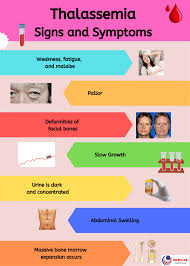Dropping Hemoglobin- Not just Anemia can be Thalassemia
THALASSEMIA
Thalassemia is a inherited blood disorder in which mutated genes are passed from parents to children, where hemoglobin formation process is disturbed.
Hemoglobin is the pigment present in blood which gives blood its color and make it rich in oxygen which provides oxygen to each and every cell of the body.
So this implies that defective hemoglobin can lead to serious problems.
Synthesis of Hemoglobin:-
The two main components of hemoglobin synthesis are globin production and heme synthesis. Globin chain production occurs in the cytosol of erythrocytes and occurs by genetic transcription and translation. Many studies have shown that the presence of heme induces globin gene transcription.
So any mutation observed in the formation of globin chain leads to the defect named thalassemia.
Types of Thalassemia:-
Thalassemia Major:- It is also known as beta-thalassemia, in which there is severely deficient synthesis of β-globulin chains of hemoglobin resulting in severe anemia that requires lifelong blood transfusions.
Thalassemia Minor:- It is a condition, in which only one gene is mutated and shows mild symptoms as hemoglobin also does not drop below 10mg/dl.
Signs and Symptoms:-
- Fatigue
- Weakness
- Pale or yellowish skin
- Facial bone deformities
- Slow growth
- Abdominal swelling
- Dark urine
- Iron deposition in liver
- Disruption of cardiac rhythm
- CBC
- Peripheral blood smear
- Iron study
- Erythrocyte Porphyrin levels
- Hemoglobin electrophoresis
- DNA analysis
- Genetic testing of amniotic fluid
- Multi system evaluation
- Frequent blood transfusions:- More severe forms of thalassemia often require regular blood transfusions, possibly every few weeks. To limit transfusion-related complications, washed, packed red blood cells (RBCs) at approximately 8 to 15 mL cells per kilogram (kg) of body weight over 1 to 2 hours are recommended.
- The goal is to maintain Hb at around 9 to 10 mg/dl to give the patients a sense of well being and also to keep a check on erythropoiesis and suppress extramedullary hematopoiesis.
- Chelation therapy to get rid of the excess iron deposits in the body
- Stem cell transplant
- Genetic therapy
- Genome editing technique
- Splenectomy- Surgical removal of spleen
- Cholecystectomy:- Surgical removal of gall bladder










Comments
Post a Comment